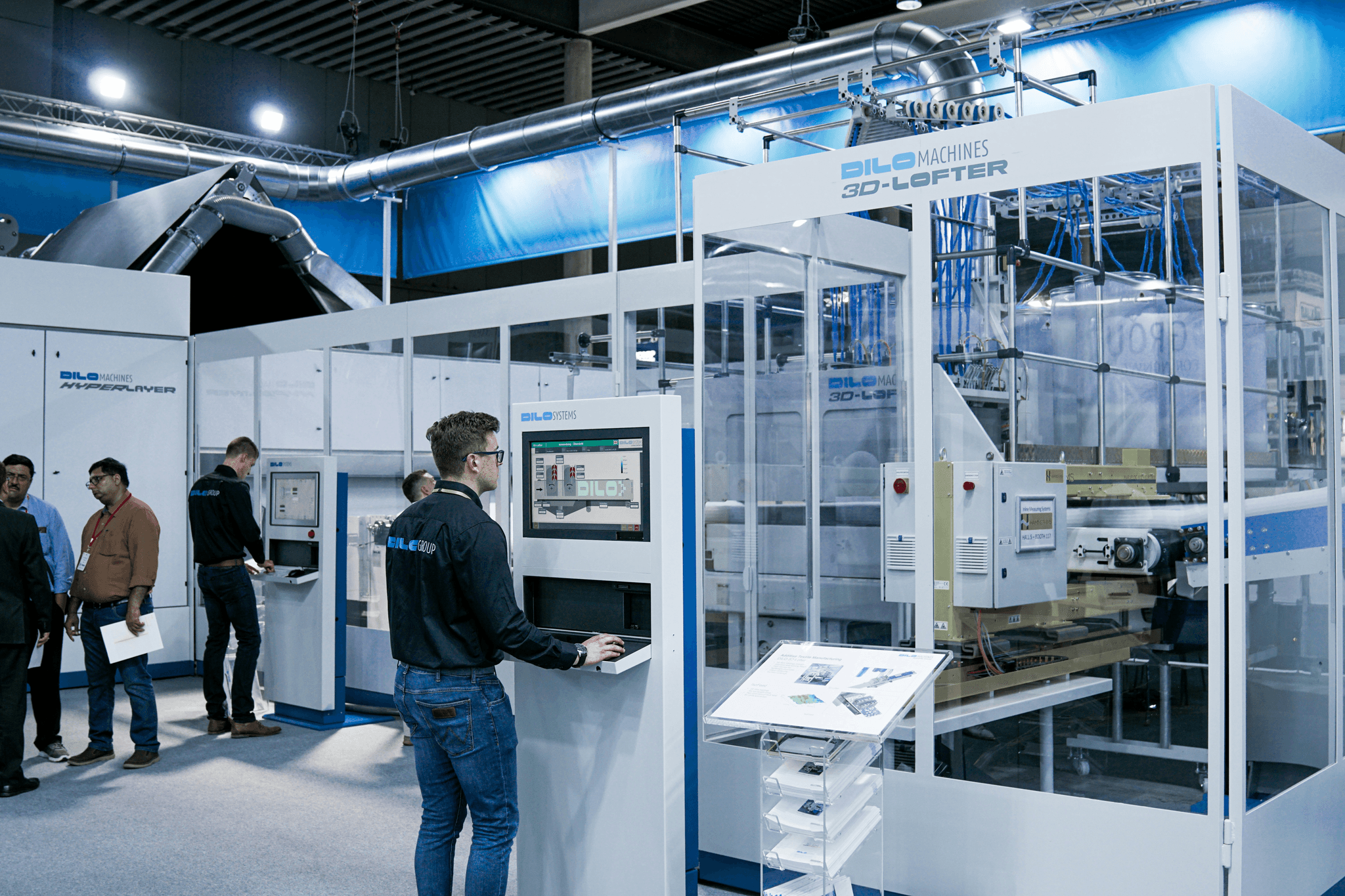Introduction

In today’s fast-paced manufacturing world, understanding AQL (Acceptable Quality Level) is crucial for maintaining product integrity and customer satisfaction. AQL meaning revolves around the threshold of defects permissible in a batch of products, serving as a pivotal metric in quality control management. This concept not only streamlines the quality inspection process but also enhances overall efficiency within a quality control system.
Understanding AQL: A Quick Overview
AQL is essentially a statistical measurement that determines the maximum number of defective items considered acceptable during random sampling inspections. By setting an acceptable level of defects, manufacturers can ensure that their products meet specific standards without having to inspect every single item. This approach saves time and resources while still upholding the principles of quality control in manufacturing.
Importance of Quality Control in Manufacturing
Quality control plays an integral role in manufacturing by ensuring that products are produced consistently and meet customer expectations. Implementing robust quality control systems helps manufacturers identify defects early, reducing waste and increasing efficiency throughout the production cycle. In essence, effective quality control management not only safeguards brand reputation but also fosters long-term customer loyalty.
AQL in Real-World Applications
In real-world applications, AQL is utilized across various industries—from electronics to textiles—demonstrating its versatility and importance in product quality control. For instance, a clothing manufacturer might use AQL standards to determine how many defective garments are acceptable before rejecting an entire shipment. Such practical applications underscore how critical understanding AQL meaning is for businesses aiming to excel in today’s competitive market.
What is AQL?

Understanding AQL is crucial for anyone involved in the realm of quality control, particularly within manufacturing environments. At its core, AQL, or Acceptable Quality Level, serves as a benchmark for determining the maximum number of defective items considered acceptable in a batch. This metric plays a pivotal role in quality inspection processes, ensuring that product quality control meets industry standards while also balancing cost-effectiveness.
Defining AQL Meaning
AQL meaning can be boiled down to a simple principle: it defines the threshold of defects that manufacturers are willing to accept during quality control inspections. When conducting quality inspections, companies specify an AQL percentage that indicates how many defective items they can tolerate within a sample size. For example, if a batch has an AQL of 1%, this means that out of every 100 items inspected, only one item can be defective before the entire batch is deemed unsatisfactory.
Historical Context of AQL
The concept of AQL has roots dating back to World War II when the need for effective quality control systems became paramount in military production lines. As industries evolved post-war, so did the methodologies surrounding product quality control; hence, AQL emerged as a standardized metric to ensure consistency and reliability across various sectors. Over time, it has been integrated into modern quality control management practices worldwide and remains relevant today due to its effectiveness in maintaining high standards.
AQL vs. Other Quality Metrics
When comparing AQL with other quality metrics like Total Quality Management (TQM) or Six Sigma, it's clear that each serves distinct purposes within the broader scope of quality control in manufacturing. While TQM focuses on long-term strategies for continuous improvement across all organizational levels and Six Sigma aims at reducing defects to near perfection (3.4 defects per million opportunities), AQL provides a more straightforward approach for batch acceptance decisions during routine inspections. Understanding these differences helps businesses determine which metrics best align with their specific goals for product quality control and operational efficiency.
The Role of Quality Control Systems

Quality control systems are the backbone of effective manufacturing processes, ensuring that products meet specified standards before they reach consumers. These systems encompass a range of practices and methodologies designed to monitor and manage quality throughout the production cycle. By focusing on quality control management, businesses can minimize defects, enhance customer satisfaction, and ultimately improve their bottom line.
Fundamentals of Quality Control Management
At its core, quality control management involves systematic processes aimed at maintaining product quality through various stages of production. This includes defining standards for acceptable quality levels (AQL meaning) and implementing checks to ensure compliance with those standards. Effective quality control in manufacturing not only identifies defects but also helps in analyzing their root causes, allowing for continuous improvement.
Incorporating a robust quality control system means establishing clear protocols for monitoring production processes and outcomes. Regular training for employees on these protocols is essential to foster a culture of quality within the organization. Ultimately, strong quality control management lays the groundwork for successful product launches and sustained customer trust.
Types of Quality Control in Manufacturing
Manufacturing embraces several types of quality control measures that cater to different aspects of product development. Statistical Process Control (SPC) is one method that uses statistical techniques to monitor and control production processes, ensuring they operate at their full potential without significant variation. Another common approach is Total Quality Management (TQM), which focuses on long-term success through customer satisfaction by integrating all members of an organization into the process.
In addition to these methods, inspections play a crucial role in maintaining product quality control by identifying defects before products reach the market. Inspections can be carried out at various stages—incoming materials inspection, in-process inspection during production, or final inspections before shipment—each contributing significantly to overall product reliability. By utilizing diverse types of quality control systems tailored to specific needs, manufacturers can effectively mitigate risks associated with poor-quality outputs.
Importance of Quality Inspection Processes
Quality inspection processes are indispensable in any effective manufacturing operation as they serve as checkpoints throughout the production cycle. These inspections ensure that products not only meet defined specifications but also align with customer expectations regarding functionality and safety. A rigorous inspection regime helps identify issues early on—saving time and resources while enhancing overall product integrity.
Moreover, regular inspections foster accountability among team members involved in production by creating a sense of ownership over their work's output quality. This engagement often leads to improved morale among employees who take pride in delivering high-quality products consistently. In essence, robust quality inspection processes are vital for sustaining high standards across all facets of manufacturing operations.
Determining Acceptable Levels

Determining acceptable levels of quality is crucial for ensuring that products meet both customer expectations and regulatory standards. AQL, or Acceptable Quality Level, plays a significant role in this process by providing a statistical measure to gauge product quality during the manufacturing phase. Understanding how to set these levels can make the difference between a successful product launch and costly recalls.
Factors Influencing AQL Standards
Several factors influence the establishment of AQL standards, including industry regulations, customer expectations, and historical data on defect rates. For instance, industries with stringent safety requirements—such as pharmaceuticals—often adopt lower AQL thresholds to minimize risks associated with defects. Additionally, the nature of the product itself can dictate acceptable levels; for example, luxury items may have stricter quality control measures compared to everyday consumer goods.
The complexity of production processes also affects how AQL is determined; more intricate manufacturing systems might warrant tighter controls due to increased potential for errors. Furthermore, geographic considerations and market demands can play a role in shaping these standards, as different regions may prioritize various aspects of quality control in manufacturing. Ultimately, establishing appropriate AQL standards requires a careful balancing act among these diverse factors.
Common AQL Levels Explained
Commonly accepted AQL levels typically range from 0.1% to 10%, depending on the industry and product type being manufactured. For example, an AQL of 0.65% might be standard in electronics where precision is paramount, while textiles could have an acceptable level around 4%. These varying levels reflect the unique challenges each sector faces regarding quality inspection processes.
Understanding these common levels is essential for manufacturers aiming to maintain consistent product quality control throughout their operations. When companies set their own specific AQL thresholds based on industry norms and internal benchmarks, they create a framework that guides their quality control management efforts effectively. This strategic approach helps ensure that products not only meet but exceed customer satisfaction.
How AQL Affects Product Quality Control
A well-defined AQL system significantly impacts product quality control by providing clear guidelines for inspections and assessments throughout the production process. By adhering strictly to established AQL levels during quality inspection phases, manufacturers can identify defects early on and take corrective actions before products reach consumers' hands. This proactive approach minimizes waste and enhances overall efficiency within the quality control system.
Moreover, effective implementation of an appropriate AQL strategy fosters greater accountability among teams involved in production and inspection activities; everyone understands what constitutes acceptable versus unacceptable performance metrics underlined by defined standards like those provided by AQL meaning frameworks. Consequently, this clarity leads to improved morale as employees feel empowered knowing they contribute directly toward maintaining high-quality outputs.
In summary, determining acceptable levels through carefully considered factors yields profound implications for maintaining robust product quality control systems across various industries—ensuring both compliance with regulations while simultaneously delighting customers with superior products.
Implementing AQL in Manufacturing

Implementing Acceptable Quality Level (AQL) procedures in manufacturing is crucial for ensuring product quality control. A well-defined AQL process helps organizations maintain high standards while minimizing waste and inefficiencies. By integrating AQL into the quality control system, manufacturers can enhance their overall quality control management practices, leading to better customer satisfaction.
Steps to Establish AQL Procedures
Establishing effective AQL procedures begins with a clear understanding of aql meaning and its implications for quality inspection processes. First, manufacturers must identify the specific products and processes that require monitoring, followed by determining acceptable defect levels based on their unique operational context. Next, it’s essential to develop a comprehensive quality control management plan that outlines sampling methods, inspection frequency, and reporting protocols to ensure consistent adherence to established standards.
Once the framework is in place, training staff on these procedures is vital to foster a culture of quality awareness within the organization. This training should emphasize the importance of maintaining product quality control through diligent inspections and proper documentation of findings. Finally, regular reviews and updates of these procedures will help adapt them to any changes in production or market demands while reinforcing their effectiveness over time.
Real-World Examples of AQL Applications
Numerous industries have successfully implemented AQL practices into their manufacturing processes, showcasing its versatility and effectiveness in quality control management. For instance, in the electronics sector, companies often employ strict AQL standards during production runs to ensure that components meet reliability expectations before they reach consumers. By utilizing rigorous sampling techniques during quality inspection phases, they can effectively minimize defects while maintaining cost-efficiency.
Another notable example can be found in the textile industry where manufacturers use specific AQL levels for fabric inspections before shipment. This approach not only safeguards against potential flaws but also enhances brand reputation by delivering consistently high-quality products to retailers and consumers alike. These real-world applications highlight how embracing aql meaning within various contexts can lead to significant improvements in overall product quality control.
Challenges in Maintaining AQL Compliance
Despite its benefits, maintaining compliance with established AQL standards poses several challenges for manufacturers striving for excellence in quality control systems. One major hurdle is ensuring that all employees understand the importance of adhering strictly to defined protocols throughout every stage of production—a task easier said than done! Continuous training and communication are essential but often neglected due to time constraints or budget limitations.
Additionally, fluctuations in supply chain dynamics may impact consistency across different batches of products; therefore, staying vigilant about external factors affecting product quality control becomes paramount for success. Manufacturers must also be prepared for unexpected shifts—such as new regulations or market trends—that could necessitate adjustments to existing processes or even re-evaluation of current AQL levels altogether!
In summary, while implementing an effective approach towards managing acceptable levels within manufacturing operations entails navigating potential pitfalls along the way; it remains an indispensable aspect driving long-term success through superior product offerings.
AQL and Global Trade

In today's interconnected world, the significance of Acceptable Quality Level (AQL) transcends borders, influencing how products are manufactured, inspected, and traded globally. As businesses expand their reach into international markets, understanding AQL meaning becomes crucial for maintaining product quality control while adhering to diverse quality standards. This section delves into the relationship between AQL and global trade, highlighting its importance in fostering trust between importers and exporters.
How AQL Relates to International Standards
AQL is intrinsically linked to various international standards that govern quality control in manufacturing. Organizations such as ISO (International Organization for Standardization) have established guidelines that incorporate AQL principles to ensure consistent quality inspection processes across industries. By aligning with these standards, companies not only enhance their reputation but also streamline their quality control management practices on a global scale.
Moreover, different countries may have specific regulations regarding acceptable levels of defects in products; understanding these nuances is vital for compliance. For instance, an exporter must be familiar with the AQL requirements of their target market to avoid costly rejections or returns due to subpar product quality control. Thus, integrating AQL within a broader framework of international standards allows businesses to navigate complex trade environments effectively.
Benefits of AQL for Importers and Exporters
For importers and exporters alike, implementing AQL offers numerous advantages that can significantly impact their bottom line. First and foremost, it establishes a clear benchmark for product quality control by defining acceptable defect rates during production runs. This clarity helps reduce misunderstandings between trading partners about what constitutes an acceptable level of quality inspection.
Additionally, utilizing AQL can lead to substantial cost savings by minimizing the need for extensive rework or replacement shipments due to poor-quality goods entering the supply chain. Importers can confidently source products knowing they meet predefined standards while exporters gain a competitive edge by demonstrating adherence to rigorous quality control systems. Ultimately, embracing AQL fosters better business relationships built on trust and reliability.
The Role of China Inspection Pro in Quality Control
China Inspection Pro plays a pivotal role in enhancing product quality control through effective implementation of AQL practices within manufacturing processes across China’s vast industrial landscape. With expertise in navigating local regulations and international standards related to quality inspection, this organization helps businesses maintain compliance while ensuring high-quality outputs from suppliers. Their services include comprehensive inspections based on defined AQL parameters tailored specifically for each client’s needs.
By partnering with China Inspection Pro, companies not only streamline their supply chain operations but also gain access to valuable insights regarding potential risks associated with production runs—allowing them to make informed decisions early on in the process. Furthermore, this collaboration enhances overall transparency between manufacturers and buyers by ensuring consistent adherence to agreed-upon quality metrics throughout production cycles—resulting in fewer disputes over product discrepancies down the line.
In conclusion, understanding how AQL intersects with global trade is essential for any business looking to thrive in today’s competitive environment; it empowers organizations by providing them with robust frameworks around which they can build effective quality control management strategies while fostering stronger partnerships across borders.
Conclusion
As we wrap up our exploration of AQL (Acceptable Quality Level), it's clear that understanding its meaning and significance is crucial for effective quality control in manufacturing. AQL serves as a benchmark for product quality control, ensuring that goods meet certain standards before they reach consumers. By implementing robust quality inspection processes, manufacturers can enhance their reputation and maintain customer satisfaction.
Summarizing Key AQL Insights
Throughout this discussion, we've highlighted the importance of AQL in establishing a quality control system that aligns with industry standards. The historical context of AQL illustrates how it has evolved to become a vital component of quality control management, providing manufacturers with the tools to gauge acceptable levels of defects. Moreover, we explored how different AQL levels impact overall product quality control, reinforcing the necessity of adhering to these benchmarks.
Future Trends in Quality Control Management
Looking ahead, the landscape of quality control management is poised for transformation through advancements in technology and data analytics. Automation and artificial intelligence are set to play significant roles in enhancing quality inspection processes, making them more efficient and accurate than ever before. As manufacturers increasingly adopt smart technologies, the integration of real-time data will enable proactive adjustments to maintain compliance with established AQL standards.
Final Thoughts on AQL Significance
In conclusion, the significance of AQL cannot be overstated; it is not just a number but a crucial element that underpins successful manufacturing practices worldwide. Embracing effective quality control methodologies allows businesses to thrive in competitive markets while ensuring consumer trust through consistent product quality. Ultimately, understanding and implementing AQL principles will remain indispensable as industries continue to evolve.
